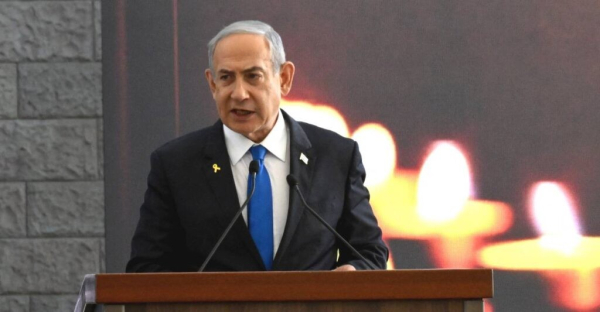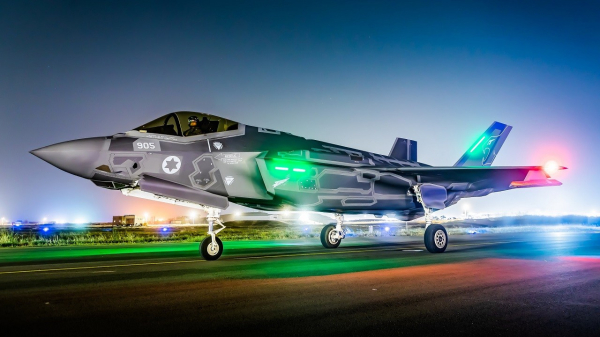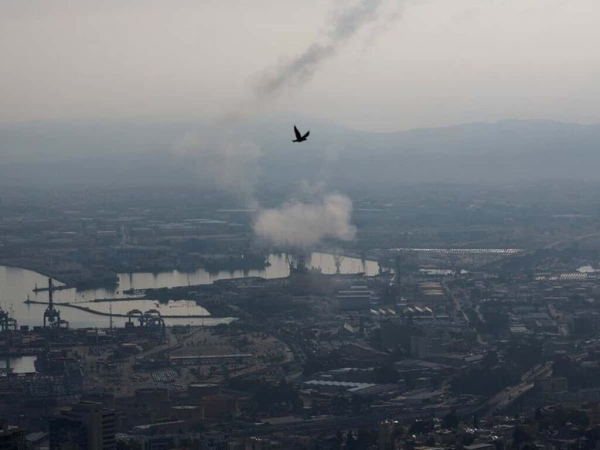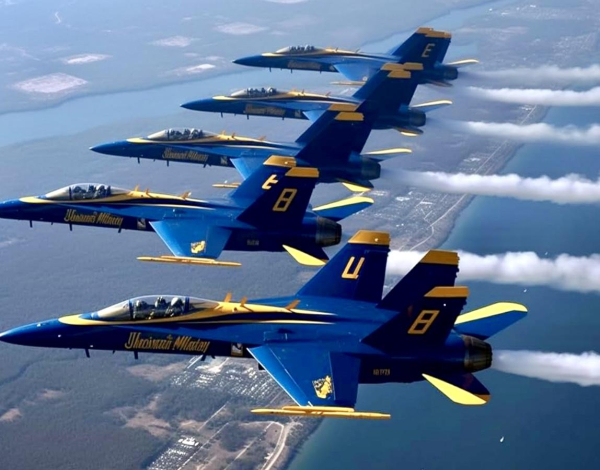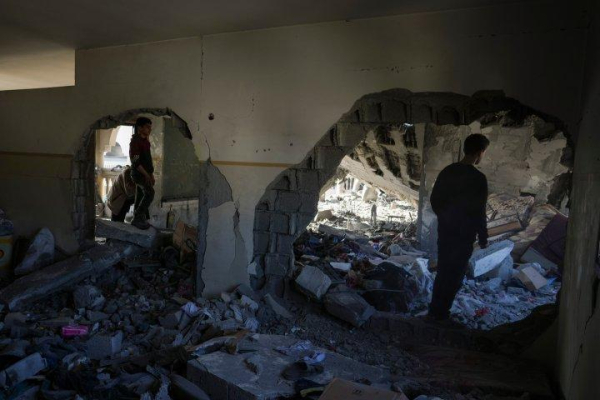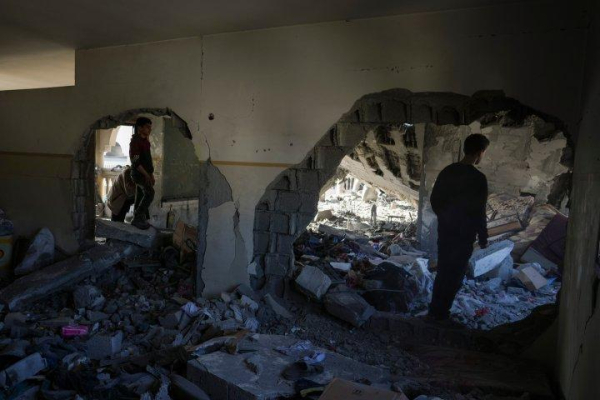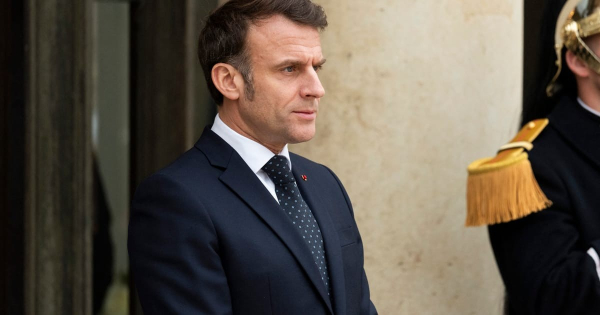Suche
Beiträge, die mit Military getaggt sind
It's a long read, unsurprisingly, as it is a long war, but I cannot recommend it strongly enough for those that wish a deeper understanding of the conflict up to the point of Trump's second term.
https://www.nytimes.com/interactive/2025/03/29/world/europe/us-ukraine-military-war-wiesbaden.html
It makes me want to raise funds for attritable air platforms to carry Wide Area Motion Imaging payloads for the Ukranians, so they might (EM spectrum permitting) be assured of what lies in the ground ahead of them, and keep moving swiftly (for to remain still or move slowly in battle - or indeed any conflict - is usually a terrible idea).
I am astonished that attempts to demolish the Kerch Strait bridge were forbidden by the US in 2022, and much later, that ban was lifted. Strategically, I'm gobsmacked at the way both sides prioritise politically desirable targets over winning the conflict definitively. Perhaps I am naive.
I am sad that the most excellent authors of the piece did not point out Ukraine's population demographics (worth looking up to understand why they abhor sending under-25yos to fight).
I am sure others reading this account will view it from a different aspect and be surprised by different things. I'd be curious to know what they are (as well as any hashtags I missed) if anyone cares to post here!
#war #warfare #ukraine #russia #journalism #NYTimes #military #USA #Canada #UK #Poland #Turkey #Germany #Belgium #Lithuania #Latvia #Estonia

The Secret History of America’s Involvement in the Ukraine War
This is the untold story of America’s hidden role in Ukrainian military operations against Russia’s invading armies.Adam Entous (The New York Times)
https://vietnam-aujourdhui.info/2025/03/31/vietnam-offers-300000-emergency-aid-for-myanmar-earthquake/
#VietnamNews #Military #Myanmar #Vietnam

Vietnam offers $300,000 emergency aid for Myanmar earthquake - Le Viêt Nam, aujourd'hui
In response to Myanmar's request for assistance, Vietnam has offered an emergency aid package worth $300,000 to support earthquake recovery efforts.VNA_PGU (Le Viêt Nam, aujourd'hui)
‘Lay down weapons, leave Gaza,’ Israel tells Hamas leaders
Jerusalem: Israeli Prime Minister Benjamin Netanyahu on Sunday offered to let Hamas leaders leave Gaza but demanded the group abandon its arms, as his country kept up its bombardment of the Palestinian territory.BYTESEU (Bytes Europe)
We are outraged to learn that Canada has approved a contract for the export of artillery propellant to the Israeli military via the US, despite an explicit commitment from Minister Joly
that she would stop such transfers.
https://www.cjpme.org/pr_2025_03_28_artillery_propellants
#Canada #Israel #Gaza #Genocide #Military #Weapons #Artillery #US #WarCrime #Hypocrisy
https://flip.it/EEBP6p
#US #UnitedStates #Lithuania #Military #Army
Tulsi Gabbard and the CIA director lied under oath.
https://x.com/Partisangirl/status/1904903417312739576
#war #military #tulsigabbard
#Gaza #Palestine #Syria #iran
#lebanon #Genocide #geopolitics
@palestine @lebanon @yemen @irannachrichten #SettlerColonialism
#AntiImperialism
#antiPalestinianracism
#tiktok #cdnpoli @blackmastodon #usa #canada #immigration
The highest-"ranking" country in Europe is mine: #Germany.
»The China Index seeks to establish an interactive world map that visualizes the PRC‘s evolving influence in different countries. The Index captures PRC influence across nine Domains: #Academia, Domestic Politics, #Economy, Foreign Policy, #Law Enforcement, #Media, #Military, #Society, and #Technology. Each of these Domains contains 11 Indicators corresponding to an observable phenomenon of PRC influence, and presents comparable data collected by regional partners through collaboration with local experts.«
https://china-index.io/

China Index - China In The World
Doublethink Lab and the China In The World network present the China Index, the first cross-regional project to objectively measure and visualize the People‘s Republic of China (PRC)‘s overseas influence through comparable data.china-index.io
➡️ https://dndnetz.blogspot.com/2025/03/die-notige-umstrukturierung-der.html
#Rüstungsindustrie #deutschland #news #politics #politik #europe #military #nato #germany #rheinmetall #europa #aktuell #journalism #bundeswehr #industrie #economy #wirtschaftspolitik #germaneconomy
https://www.sfchronicle.com/politics/joegarofoli/article/pete-hegseth-signal-20240691.php #NationalSecurity #Signalgate #military #VodkaPete #politics #media.

The art of the lie: Can Pete Hegseth pull it off?
In response to the news that he was planning a military strike on Signal, Defense Secretary Pete Hegseth responded the way his boss does: He lied.Joe Garofoli (San Francisco Chronicle)
F-35I Adir: The Isreali Fighter That Destroyed Iran’s Air Defenses - EUROPE SAYS
Summary and Key Points: Israel’s customized F-35I Adir stealth fighter has proven highly effective, notably demonstrated by aEUROPE SAYS (EUROPESAYS.COM)

We need to pay closer attention to Svalbard
NATO members and other allies would do well to start thinking about how they’d respond if Russia took action against one of its most remote geographies.Elisabeth Braw (POLITICO)
The Israeli #military is committing #genocide against #Palestinians at the fastest rate since October 2023. Since the Israeli government violated the #ceasefire nearly a week ago, the Israeli military has killed nearly 700 Palestinians, including at least 400 #women and #children.
#Israel #Palestine #Gaza #Genocide #JVP #SaveGaza #StopIsrael #SanctionIsrael #PeaceNow
@palestine@a.gup.pe @palestine@lemmy.ml @israel
Allies of the #UnitedStates see the group chat between top U.S. officials about a planned attack in #Yemen that accidentally included a #journalist as a jaw-dropping #SecurityBreach which casts doubt on intelligence-sharing with #Washington and the security of joint #military operations.
#Houthi #SecDef #Signal
https://www.ctvnews.ca/world/article/americas-allies-alarmed-by-a-leaked-group-chat-about-attack-plans/

America's allies alarmed by a leaked group chat about attack plans
Allies of the United States see the group chat between top U.S. officials about a planned attack in Yemen that accidentally included a journalist as a jaw-dropping security breach.The Associated Press (CTVNews)
Senior Hezbollah commander killed in Israeli drone strike in Lebanon
Beirut: A senior military commander of the Lebanese armed group Hezbollah was killed in an Israeli drone strike in Nabatieh, southern Lebanon, according to a Lebanese security source on Tuesday.BYTESEU (Bytes Europe)
https://defensemirror.com/news/39128/Three_Russian_Journalists_Die_in_Targeted_Killing_in_Ukraine
#WarCrime #Luhansk #HIMARS #Journalists #Media #WarReport #Zvezda #Izvestia #ConflictNews #UN #Military #Donbas #Kursk #NewsUpdate #SpecialMilitaryOperation #Ukraine #Russia #UkrainianAirForce
https://defensemirror.com/news/39128/Three_Russian_Journalists_Die_in_Targeted_Killing_in_Ukraine
#WarCrime #Luhansk #HIMARS #Journalists #Media #WarReport #Zvezda #Izvestia #ConflictNews #UN #Military #Donbas #Kursk #NewsUpdate #SpecialMilitaryOperation #Ukraine #Russia #UkrainianAirForce
Huckabee, Trump’s Israel ambassador nominee, to face senators as Gaza war restarts
WASHINGTON (TNND) — President Donald Trump's nominee to be ambassador to Israel will face a confirmation hearing Tuesday as the U.S.BYTESEU (Bytes Europe)

Six Short Thoughts on the Most Insane Trump Story of All Time
Trump's "Team of Amateurs" Screwed Up in the Most Hilarious (and Troublesome) WayDoomsday Scenario
The occupying Israeli #military then stepped in…to detain Hamdan Ballal.
#Occupation #Oscars #Terrorism #Israel #Politics
And, surprise, he’s naming it after himself!
https://people.com/donald-trump-new-boeing-fighter-jet-named-after-him-11701407
#press #military
Donald Trump Asks Boeing to Design a New Military Jet. He's Naming It After Himself
The U.S. Air Force's new fighter jet was given a name that nods to Donald Trump's presidency. The jet, which will be built by Boeing, will be 'the most advanced, most capable, most lethal aircraft ever built,' according to TrumpRachel Raposas (PEOPLE)

Israel-Lebanon truce in danger after fresh attacks
A new war “would be devastating for Lebanon,” Lebanese Prime Minister Nawaf Salam has said.Nicolas Camut (POLITICO)
Israel had said that it would respond 'severely' to the early Saturday attack from Lebanon when rockets were fired into northern Israel.
#politics #war #attack #military #Israel #Lebanon
https://globalnews.ca/news/11093669/israel-lebanon-gaza-rocket-attack-ceasefire/
Israel had said that it would respond 'severely' to the early Saturday attack from Lebanon when rockets were fired into northern Israel.
#politics #war #attack #military #Israel #Lebanon
https://globalnews.ca/news/11093669/israel-lebanon-gaza-rocket-attack-ceasefire/
by Phil Miller in Declassified UK @Declassified_UK
@palestine
@israel
@UKLabour
“The former head of Britain’s armed forces is providing advice to Israeli arms firms, sparking questions over his role in a country whose prime minister is wanted by the International Criminal Court (ICC)”
https://www.declassifieduk.org/deeply-concerning-british-generals-israeli-weapons-job-criticised/
#Press #UK #Israel #Carter #Secret #Military #Cooperation #Pact #ICC #Genocide #Exigent #Capital #ACOBA

‘Deeply concerning’: British General's Israeli weapons job criticised
General Carter signed a military treaty with Israel. Now he advises Israeli arms firms.PHIL MILLER (Declassified Media ltd)
The U.S. mentioned "FALCO," a new APKWS II variant under a BAE Systems program to enhance air-launched counter-drone operations.
https://defensemirror.com/news/39092/U_S_A_F_Uses_Laser_Guided_Rockets_against_Houthi_Drones__Houthis_Claim_16th_MQ_9_Reaper_Downed
#USAF #Military #Defense #Drones #UAV #AirForce #Iran #Houthi #MQ9Reaper #RedSea #MissileDefense #CounterUAV #Security #MiddleEast #CENTCOM #F16 #AirDefense #Technology #Geopolitics #laserguided #APKWSII #Israel #Reaper #PredatorB
U.S.A.F Uses Laser-Guided Rockets against Houthi Drones; Houthis Claim 16th MQ-9 Reaper Downed
APKWS II rocket, originally an air-to-ground weapon, was recently adapted for air-to-air use against drones.defensemirror.com
Lockheed Martin must really hate Trump just right about now. 🤣
#war #military #defenseIndustry #USIndustrialComplex #Politics #LockheedMartin #F35 #KillSwitch TrumpLies #Trump #Ukraine #Betrayal #TrustIssues #Europe

EU opens fiscal tap to secure Europe but warns against ‘defense washing’
Economy Commissioner Valdis Dombrovskis stressed the flexibility is a stop-gap until countries reframe budgets around higher defense needs.Giovanna Faggionato (POLITICO)
It refers to ongoing events in the U.S. as unprecedented, mentioning Trump #pardoning 1,500 #criminals who supported him; #firing independent agency #watchdogs without process; #purging apolitical #police and #military brass; #ignoring #laws; and his unilaterally deleting federal programs, and even a whole organization, created by U.S. Congress
#auspol #RussianAsset
https://www.cbc.ca/news/world/trump-democracy-report-1.7486317
#DOJ then says that isn't what they're arguing & then shifts to their third argument, which is inherent presidential authority to move military forces.
/again, these were not #military flights!
🧵
#law #Constitution #ChecksAndBalances #JudicialBranch #Judiciary #SeparationOfPowers #AbuseOfPower #Trump #AlienEnemiesAct
UK rows back on claim Israel’s Gaza aid blockade is illegal – POLITICO - EUROPE SAYS
“But we find the lack of aid — it’s now been 15 days since aid got into Gaza — unacceptable,EUROPE SAYS (EUROPESAYS.COM)
Prime Minister Benjamin Netanyahu ordered the strikes after Hamas refused Israeli demands to change the ceasefire agreement. Officials said the operation was expected to expand.
#politics #war #military #Gaza #World #GazaCeasefire
https://globalnews.ca/news/11086356/israel-gaza-airstrikes-ceasefire-hamas/
Prime Minister Benjamin Netanyahu ordered the strikes after Hamas refused Israeli demands to change the ceasefire agreement. Officials said the operation was expected to expand.
#politics #war #military #Gaza #World #GazaCeasefire
https://globalnews.ca/news/11086356/israel-gaza-airstrikes-ceasefire-hamas/
„#Rafael and #ElbitSystems will supply a European NATO country with electronic countermeasures for protecting frigates from ship-killing missiles, the companies announced on Monday.“
https://www.defensenews.com/global/europe/2025/03/17/israeli-companies-to-supply-ship-defense-suite-to-european-frigates/
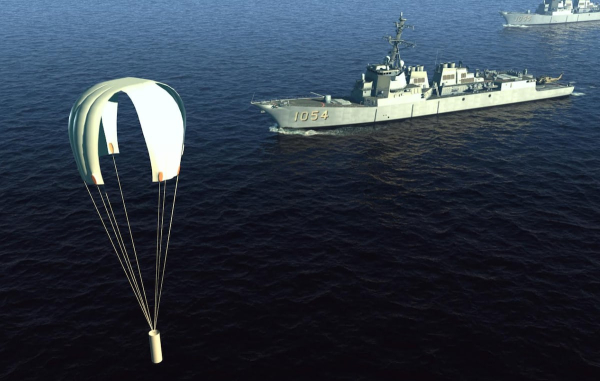
Israeli companies to supply ship-defense suite to European frigates
The joint offering by Elbit and Rafael comes amid an uptick in Europe in demand for military equipment.Tzally Greenberg (Defense News)
Stop buying American, buy European – POLITICO
'Those who buy Patriot should be offered the new-generation Franco-Italian SAMP/T. Those who buy the F-35, should be offered the Rafale. That's the way to increase the rate of production,' he said.BYTESEU (Bytes Europe)
Stop buying American, buy European – POLITICO - EUROPE SAYS
'Those who buy Patriot should be offered the new-generation Franco-Italian SAMP/T. Those who buy the F-35, should beEUROPE SAYS (EUROPESAYS.COM)
#US #UnitedStates #America #FR #France #RU #Russia #CN #China #DE #Germany #IT #Italy #GB #GreatBritain #UK #UnitedKingdom #Britain #IL #Israel #UA #Ukraine #IN #India #QA #Qatar #SA #SaudiArabia #PK #Pakistan #JP #Japan #AU #Australia #EG #Egypt #international #production #industry #trade #war #military #arms #world #exports #imports #graphic #data #visualization #DataViz

